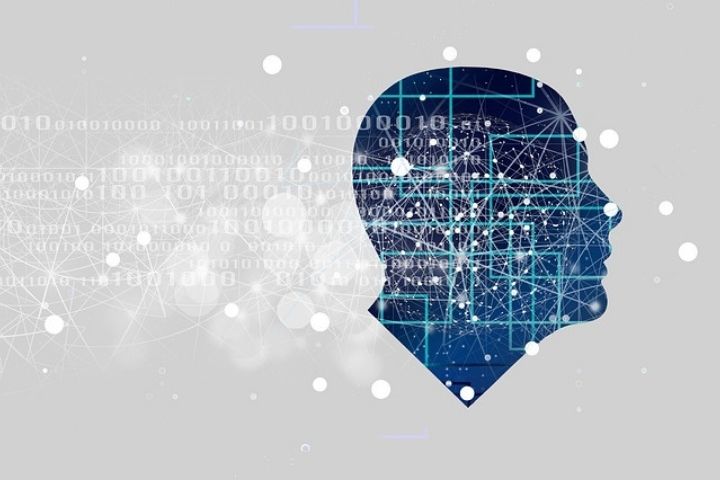All You Need To Know About Types Of Machines With Artificial Intelligence

The term Artificial Intelligence (AI) is well known, but what are the types of Artificial Intelligence that exist around us? There are four types of artificial intelligence applied to machines, ranked according to a generalized view of advances in AI research.
It is a kind of consensus that concludes that extra-intelligent and sensitive machines are getting closer and closer. In addition, we will find more and more fields of application for artificial intelligence and they will become a trend in 2021 , which will have a great impact on companies. We review 4 types of machines with artificial intelligence .
A recent White House report on Artificial Intelligence says that machines are likely to exhibit broadly applicable intelligence comparable to or superior to that of humans in the next 20 years. According to this report, machines will meet and exceed human performance in more and more tasks.
However, the document rules out that during the next two decades they will coexist with computational models as complex as humans. The North American government report focuses on what we could call general intelligence tools: machine learning and deep learning. It is the kind of technology that has beaten the masters of “Go,” the most difficult oriental game ever invented.
Current Artificial Intelligence systems are capable of handling large amounts of data. They perform complex calculations very quickly, but they still lack some keys that will allow them to build the extra-intelligent machines of the future.
The 4 types of machines with Artificial Intelligence
According to Arend Hintze, professor of Integrated Biology and Computer Science at the University of Michigan, the objective of the research is to cross the frontier of artificial intelligence (AI) that requires the previous teaching of the human being. To do this, the AI must follow the same learning process that a human being follows. As a result of his work, Arend Hintze has established a classification where he defines the four types of machines with artificial intelligence:
Table of Contents
1. Reactive Machines
The most basic type of artificial intelligence (AI) machines are purely reactive models. They do not have the ability to form memories. Nor can they use past experiences as a basis for making decisions in the present tense.
Deep Blue was a supercomputer created by IBM in 1990, which beat international grandmaster Garry Kasparov at chess and is the perfect example of this type of machine. For example, he could identify the pieces on a chessboard and know how each of them moved. He could also make predictions on the best moves and choose the best among all the possibilities.
But Deep Blue had no concept of the past, nor did it possess memories of what it had experienced before. Apart from knowing the rules of chess, Deep Blue ignored everything that happened before the present moment. All he did was focus on the pieces on the board in real time and choose from the next possible moves.
2. Limited Memory
This second type of machines with Artificial Intelligence refers to those that can look to the past. Autonomous vehicles are a good example of this. For example, they observe the speed and direction of other cars. For this to happen, they need to identify specific objects that they can monitor over time. Your direct observations are added to pre-programmed representations in the car’s memory, such as lane markings, traffic lights, curves in the road, etc. Experiences such as when the car decides when to change lanes are also added to avoid interrupting another driver, or being hit by a nearby car.
But these simple pieces of information about the past are only transitory. They are not saved as part of the car experience library. In this type of artificial intelligence, the machine cannot compile the experience for years, as it would happen to a human being.
3. Theory of Mind
We come to the type of machines with Artificial Intelligence in which we get closer to the AI that will be seen in the future. This class of machines are more advanced, they not only form representations about the world, but also about other agents or entities. In modern currents of psychology this is called “Theory of Mind.” It involves the understanding that people, creatures, and objects in the world can have thoughts and emotions, which affect their own behavior. This is crucial in the way we humans form societies, because it allows us social interaction.
If machines are to be among us in the future, they must have an advanced understanding of how we think and how people feel. They will also need to know what we expect and how we want to be treated. They will have to adjust their behavior to that of humans.
4. Self-awareness
The final step in the development of artificial intelligence (AI) is to build systems that can form representations about themselves. Ultimately, AI researchers will have to understand not only consciousness, but also build machines that possess it. Sentient beings are aware of themselves, know their internal states, and can predict the feelings of others.
We are probably still a long way from creating machines that are aware of themselves. However, efforts are focused on understanding memory, learning, and the ability to base decisions on past experiences. Self-aware AI is also an important step in understanding human intelligence on its own. In the future it will be crucial to design or develop machines that are exceptional to classify what they see in front of them.
Also Read : Microsoft Business Central






